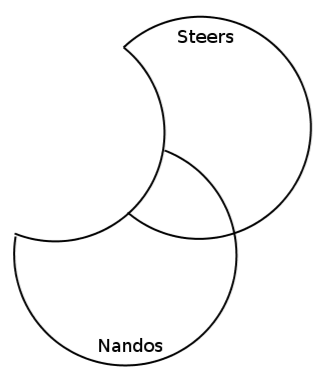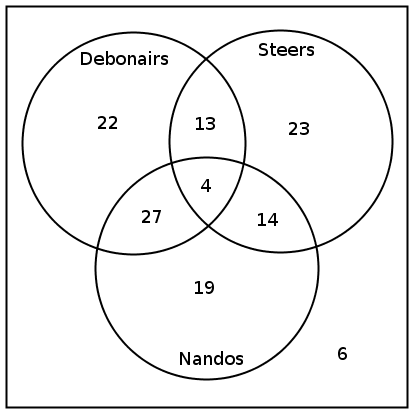| << Chapter < Page | Chapter >> Page > |
We use to refer to the number of elements in a set , for the number of elements in , etc.
In a box there are pieces of paper with the numbers from 1 to 9 written on them. A piece of paper is drawn from the box andthe number on it is noted. Let denote the sample space, let denote the event 'drawing a prime number', and let denote the event 'drawing an even number'. Using appropriate notation, in how many ways is it possible to draw: i)any number? ii) a prime number? iii) an even number? iv) a number that is either prime or even? v) a number that is both prime and even?

The union of and is the set of all elements in or in (or in both). .
The intersection of and is the set of all elements in both and . .
100 people were surveyed to find out which fast food chain (Nandos, Debonairs or Steers) they preferred. The following results were obtained:



Which cellphone networks have you used or are you signed up for (e.g. Vodacom, Mtn or CellC)? Collect this information from your classmates as well. Then use the information to draw a Venn diagram (if you have more than three networks, then choose only the three most popular or draw Venn diagrams for all the combinations). Try to see if you can work out the number of people who use just one network, or the number of people who use all the networks.

Notification Switch
Would you like to follow the 'Siyavula textbooks: grade 10 maths [caps]' conversation and receive update notifications?